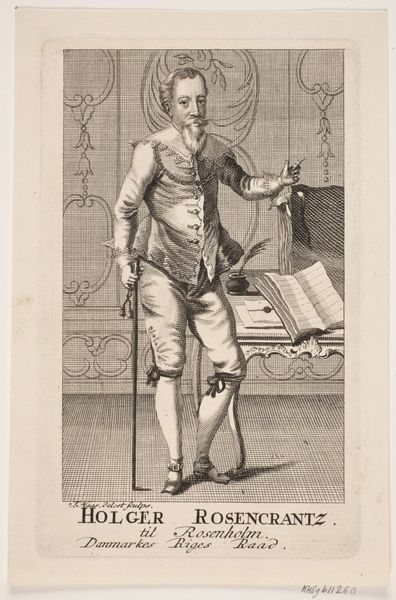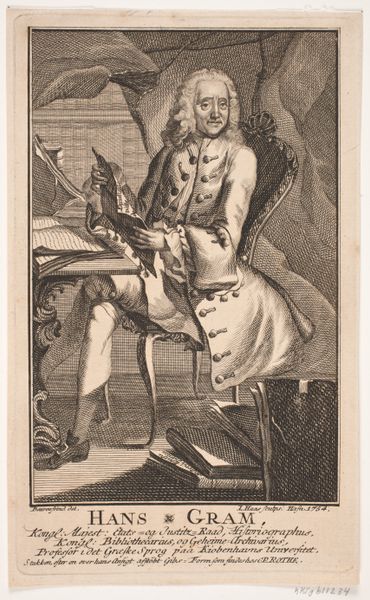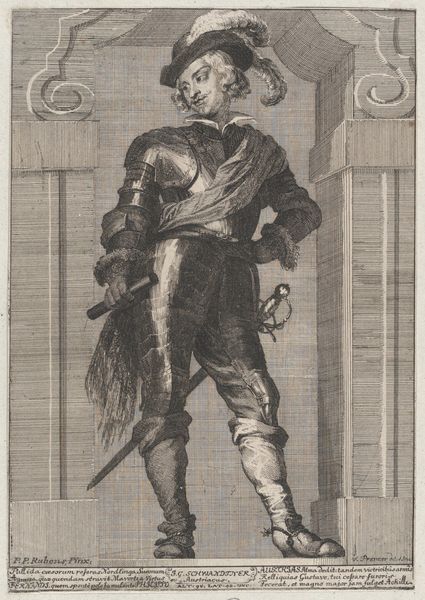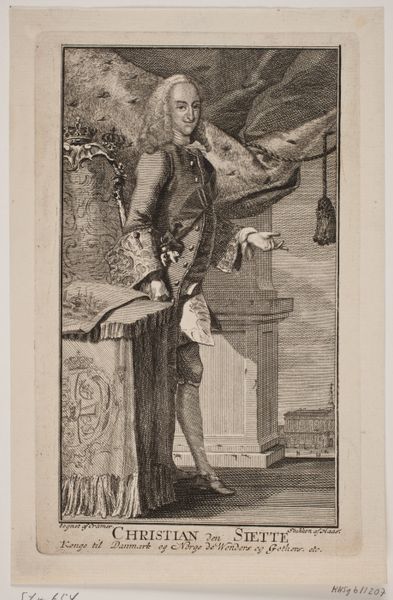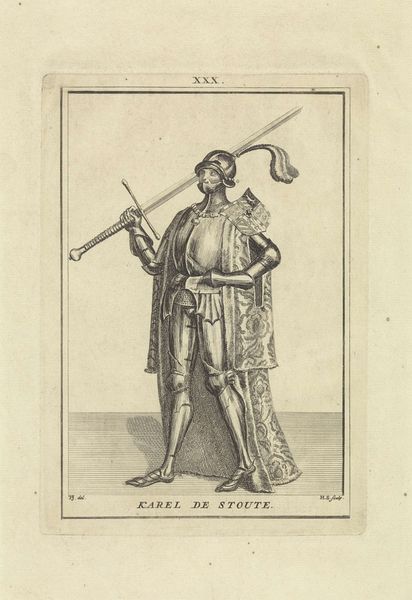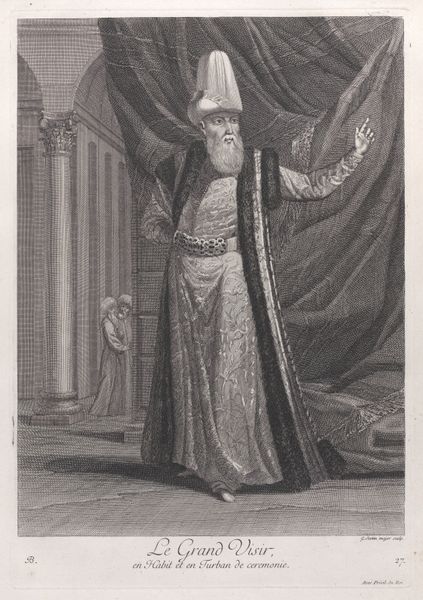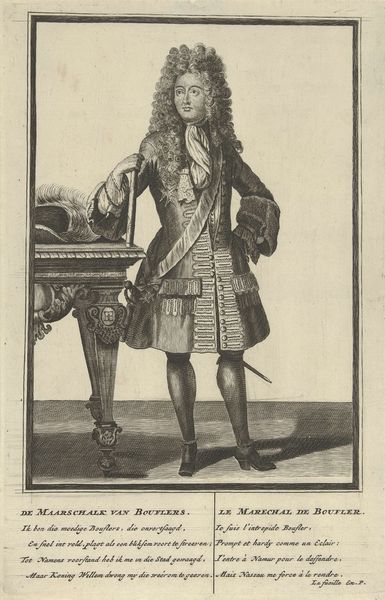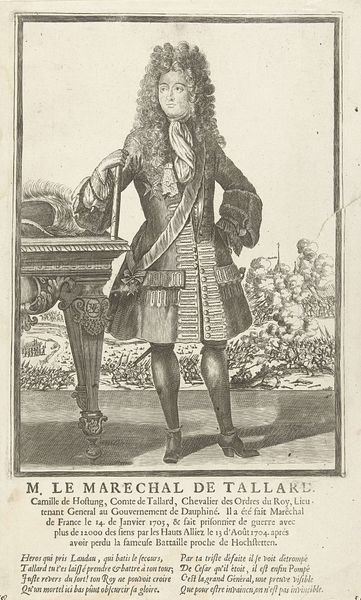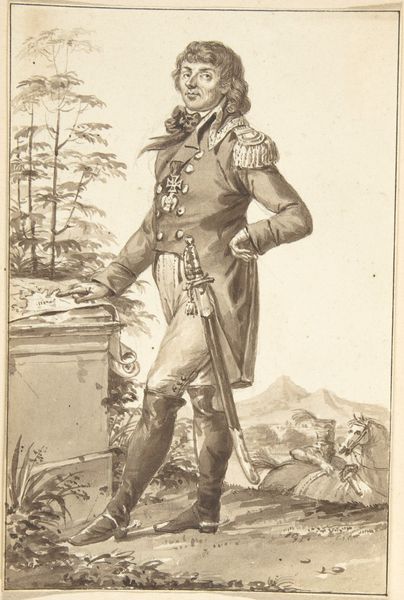
drawing, print, engraving
#
portrait
#
drawing
#
baroque
# print
#
caricature
#
old engraving style
#
caricature
#
figuration
#
line
#
history-painting
#
engraving
Dimensions: Sheet: 12 1/8 × 8 1/8 in. (30.8 × 20.6 cm)
Copyright: Public Domain
Curator: The precision of the line in this engraving is striking. Jean Couvay, circa 1620-1660, created "The Reformed Courtier", a work that now resides here at the Met. What are your initial thoughts on it? Editor: My immediate impression is one of studied carelessness. It's as if the courtier is deliberately disheveled to make a statement. What kind of materials are we looking at? Curator: Couvay's skillful use of engraving on, presumably, paper, captures a tension inherent within the French court of the period—the pull between extravagance and piety. The meticulous rendering highlights every detail of this figure's dress. Editor: It's the excess that gets me. Look at the frills at the knees, the elaborate adornments on his jacket, even the spurs seem decorative rather than functional. And this points to production of these ornamental goods; the networks of laborers and workshops required for even this man's outfit is truly something. Curator: Absolutely, and what’s further underscored is a performative shift toward a more "reformed" courtly existence as hinted at in the text at the bottom of the engraving. It speaks to the changing expectations of behavior, perhaps a reaction to perceptions of overindulgence within the French Aristocracy. Editor: The choice of engraving for a potentially satirical piece is interesting as well. There's something subversive about mass producing commentary on social hierarchies that relied heavily on manual skill. And what do we make of him scrutinizing himself in that mirror, perhaps in light of this 'reformed' ideal? Curator: I read his examination as a questioning of self-presentation. This wasn’t just about how one appeared to others but also the internal struggle of living up to new ideological constraints under royal scrutiny. Editor: Looking at it this way certainly shifts my perspective on this dude and his role, it seems. Seeing his clothing produced within the means, one now asks; whose values are truly at stake here? Curator: Precisely! It pushes us to think about the broader political theater within which the courtier navigated identity and how artists reflected—and possibly influenced—those dynamics. Editor: Right. I'll certainly walk away thinking about labor's visibility—and occasional, powerful invisibility—in this era’s satire and its objects.
Comments
No comments
Be the first to comment and join the conversation on the ultimate creative platform.
